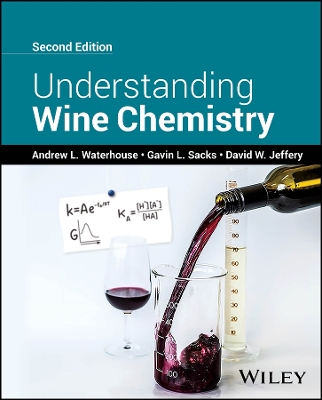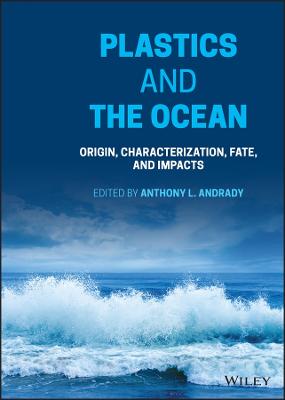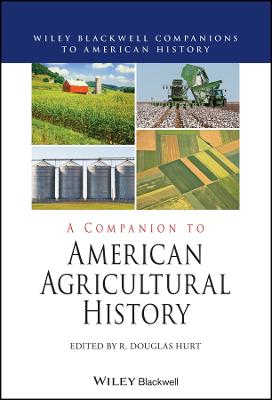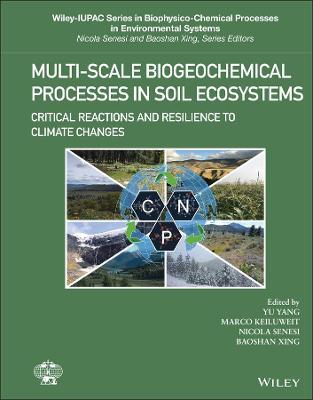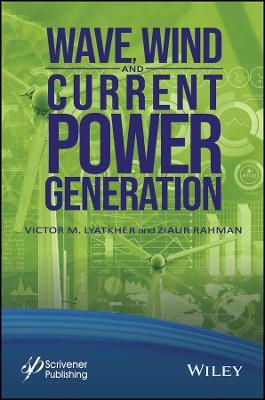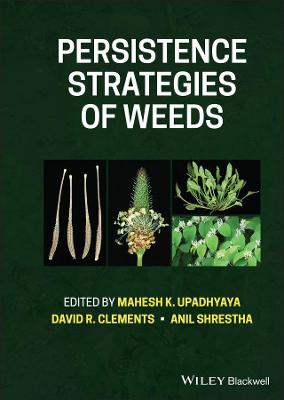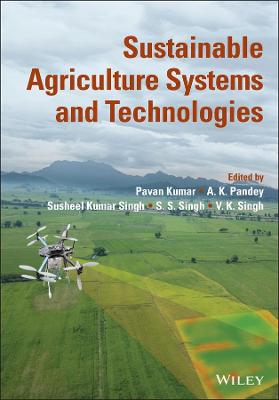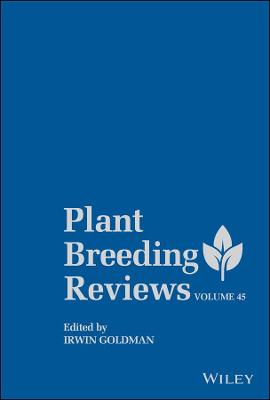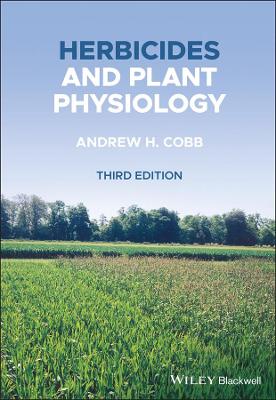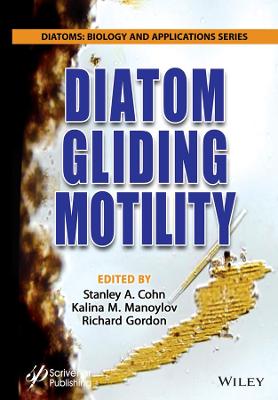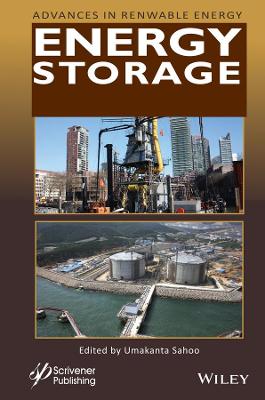Oil and Oilseed Processing
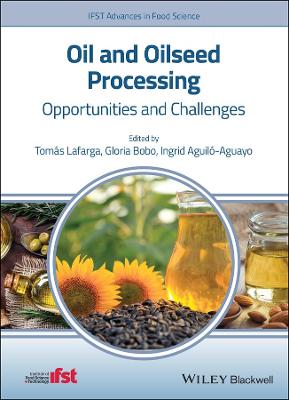 -15%
portes grátis
-15%
portes grátis
Oil and Oilseed Processing
Opportunities and Challenges
Aguilo-Aguayo, Ingrid; Lafarga, Tomas; Bobo, Gloria
John Wiley and Sons Ltd
05/2021
304
Dura
Inglês
9781119575276
15 a 20 dias
738
Preface xi
List of Contributors xiii
1 Production and Consumption of Oils and Oilseeds 1
Tomas Lafarga
1.1 Introduction 1
1.2 Oilseeds and Oils: Production and Trade 2
1.2.1 Copra and Coconut Oil 2
1.2.2 Cottonseeds and Cottonseed Oil 6
1.2.3 Groundnuts and Groundnut Oil 6
1.2.4 Linseed 7
1.2.5 Maize 8
1.2.6 Olive Oil 9
1.2.7 Palm and Palm Kernel Oil 10
1.2.8 Rapeseed and Canola Oil 12
1.2.9 Sesame Seeds and Sesame Oil 12
1.2.10 Soybean 14
1.2.11 Sunflower 14
1.3 Novel Sources for Oil Production 17
1.4 Summary 18
Acknowledgments 18
References 18
2 Conventional Oils and Oilseeds: Composition and Nutritional Importance 23
Gloria Bobo, Iolanda Nicolau-Lapena and Ingrid Aguilo-Aguayo
2.1 Introduction 23
2.2 Oilseeds 24
2.2.1 Description of Oilseeds 24
2.2.2 Physicochemical Properties of Oilseeds Oils 25
2.2.3 Nutritional Properties 25
2.2.4 Bioactive Properties 27
2.2.5 Antinutritional Factors 30
2.3 Factors Affecting Oil Yield 30
2.4 Overview of Oilseed Processing and Current Applications 33
Acknowledgments 34
References 35
3 Novel Sources for Oil Production 41
Marco Garcia-Vaquero and Brijesh K. Tiwari
3.1 Introduction 41
3.2 Algae 42
3.2.1 Microalgae 42
3.2.2 Macroalgae 47
3.3 Insects 48
3.4 Unconventional Plants and Seeds 52
3.5 Opportunities, Challenges, and Future Prospects 53
Acknowledgements 55
References 55
4 Oils Extracted from Nuts and Grains 61
Nirupama Gangopadhyay
4.1 Introduction 61
4.2 Oils 61
4.3 Nut Lipids 63
4.3.1 Composition of Nut Lipids 64
4.3.2 Processing of Nuts 66
4.3.3 Application/Utilization of Nut Lipids 68
4.4 Grain Lipids 68
4.4.1 Composition of Cereal Grains 69
4.4.2 Distribution of Lipids in Cereal Grains 72
4.4.3 Processing of Cereals 73
4.4.4 Application/Utilization of Cereal Lipids 75
4.5 Conclusions 76
References 76
5 New Approaches to Detect Compositional Shifts in Fish Oils 81
Editha Giese and Jan Fritsche
5.1 Introduction 81
5.2 Production and Processing 82
5.3 Nutritional Benefits 83
5.4 Oxidative Stability 84
5.5 Methods for Quality Assessment 84
5.6 Conventional Methods 85
5.6.1 Wet-Chemical Methods 85
5.6.2 Instrumental Methods 85
5.7 Machine Learning Approaches toward the Detection of Compositional Shifts 88
5.7.1 Standard Methods 90
5.7.2 Advanced Methods 92
5.7.3 Limitations 95
5.8 Future Perspectives 95
References 96
6 Milk Fats 103
Rogelio Sanchez-Vega, America Chavez-Martinez, Juan Manuel Tirado-Gallegos, Nestor Gutierrez-Mendez and Maria Janeth Rodriguez-Roque
6.1 Introduction 103
6.2 Health Effects of Milk Fats 105
6.2.1 Milk Fat Globule Membrane (MFGM) 105
6.2.2 Fatty Acids 105
6.2.3 Oleic Acid 105
6.2.4 Conjugated Linoleic Acid (CLA, 18:2 Conjugated) 106
6.2.5 Sphingomyelin 106
6.2.6 Phosphatidylcholine 106
6.2.7 Phosphatidylserine 106
6.3 Pre-Treatment and Processing Technologies 107
6.3.1 Cooling 107
6.3.2 Heat Treatment 107
6.3.3 Homogenization 107
6.4 Techniques for Obtaining Functionality of Milk Fats 108
6.4.1 Melting 110
6.4.2 Fractionation 110
6.4.3 Crystallization 110
6.4.4 Blending 111
6.4.5 Softening or Hardening of Milk Fat 111
6.4.6 Interesterification 111
6.4.7 Hydrolysis 111
6.4.8 Hydrogenation 111
6.4.9 Cholesterol Reduction 112
6.5 Current and Potential Applications in the Food Industry and Other Areas 112
6.5.1 Milk Fats in Foods 113
6.5.2 Structured Lipids 113
6.5.3 Edible Films 113
6.6 Non-food Uses of Milk Fats 113
6.7 Future Trends 114
References 114
7 Oils and Their Use Beyond the Food Industry 119
Douglas G. Hayes
7.1 Introduction 119
7.2 Seed Oils for Non-food and Industrial Applications 120
7.2.1 Common Oil Crops 120
7.2.2 Industrial Oil Crops 121
7.3 Industrial Applications of Seed Oils 123
7.3.1 Biopolymers 123
7.3.2 Biofuels 129
7.3.3 Surfactants 135
7.3.4 Lubricants 138
7.3.5 Plasticizers 140
7.3.6 Cosmetics 141
7.4 Conclusions and Future Prospects 141
References 142
8 Occurrence and Determination of Contaminants in Edible Oils and Oilseeds 149
Jose L. Hidalgo-Ruiz, Roberto Romero-Gonzalez, Jose Luis Martinez-Vidal and Antonia Garrido-Frenich
8.1 Introduction 149
8.2 Mycotoxins 151
8.2.1 Sources of Contamination 151
8.2.2 Legislation 152
8.2.3 Analysis 152
8.3 Polycyclic Aromatic Hydrocarbons 155
8.3.1 Sources of Contamination 155
8.3.2 Legislation 155
8.3.3 Analysis 156
8.4 3-MCPD Esters and Glycidyl Esters 158
8.4.1 Sources of Contamination 158
8.4.2 Legislation 159
8.4.3 Analysis 160
8.5 Mineral Oil 162
8.5.1 Sources of Contamination and Legislation 162
8.5.2 Analysis 163
8.6 Phthalates 166
8.6.1 Sources of Contamination 166
8.6.2 Legislation 166
8.6.3 Analysis 167
8.7 Pesticides 168
8.7.1 Sources of Contamination 168
8.7.2 Legislation 169
8.7.3 Analysis 169
8.8 Conclusions 172
Acknowledgments 173
References 173
9 By-Products from Oilseed Processing and Their Potential Applications 183
Maria Janeth Rodriguez-Roque, Rogelio Sanchez-Vega, Ramona Perez-Leal, Mayra Cristina Soto-Caballero, Nora Aidee Salas-Salazar and Maria Antonia Flores-Cordova
9.1 Introduction 183
9.2 Oilseed by-Products: Origin, Characteristics, and Composition 184
9.2.1 By-Products from Unprocessed Oilseeds 184
9.2.2 By-Products from Oilseed Processing 189
9.3 Nutritional Composition and Functional Properties of Oilseed by-Products 190
9.3.1 Carbohydrates 190
9.3.2 Proteins 191
9.3.3 Fiber 192
9.3.4 Minerals 192
9.3.5 Vitamins 192
9.3.6 Phenolic Compounds 193
9.3.7 Lignans 193
9.3.8 Tocopherols 193
9.4 Antinutritional Compounds 193
9.4.1 Glucosinolates 194
9.4.2 Phytic Acid or Phytate 194
9.4.3 Oxalic Acid 194
9.4.4 Erucic and Brassidic Acids 194
9.4.5 Carbohydrates with Antinutritional Properties 195
9.4.6 Other Antinutritional Factors 195
9.5 Current Applications in the Valorization of Oilseed by-Products 195
9.5.1 Vegetable Proteins Source 195
9.5.2 Natural Antioxidants and Preservatives 196
9.5.3 Organic Fertilizer 196
9.5.4 Livestock Diets 197
9.5.5 Renewable Energy 197
9.6 Future Trends 198
References 199
10 Proteins and Peptides Derived from Rapeseed: Techno-Functional and Bioactive Properties 203
Maria Hayes
10.1 Introduction 203
10.2 Summary of Existing Rapeseed Meal Protein Extraction Processes 204
10.3 Hydrolysis of Rapeseed Proteins and Rapeseed Meal to Produce High Value Bioactive Compounds 205
10.4 Techno-Functional Attributes of Rapeseed Proteins 206
10.4.1 Emulsifying Properties 206
10.4.2 Digestibility of Rapeseed Proteins 207
10.4.3 Solubility 208
10.5 Bioactivities of Rapeseed Protein Hydrolysates and Identified Bioactive Peptides 209
10.5.1 Heart Health Benefits - Inhibition of Enzymes Associated with Cardiovascular Disease 209
10.5.2 Anti-Proliferative Activity of Rapeseed Meal Hydrolysates/Fermentates 213
10.6 Safety of Rapeseed Proteins and Hydrolysates 213
10.7 Conclusion 213
References 214
11 Oils and Oilseeds in the Nutraceutical and Functional Food Industries 219
Manuel Suarez, Andreu Gual-Grau, Javier Avila-Roman, Cristina Torres-Fuentes, Miquel Mulero, Gerard Aragones, Francisca Isabel Bravo and Begona Muguerza
11.1 Introduction 219
11.2 Functional Food and Nutraceuticals 220
11.2.1 Definition 220
11.2.2 Regulation 221
11.3 Vegetable and Seed Oils as Source of Bioactive Compounds 221
11.3.1 Saponifiable Fraction 221
11.3.2 Unsaponifiable Fraction 222
11.4 Bioactivity of Vegetable Oils and Oilseeds 228
11.4.1 Olive Oil 228
11.4.2 Sunflower Oil 229
11.4.3 Corn Oil 229
11.4.4 Palm Oil 230
11.4.5 Peanut Oil 230
11.4.6 Avocado Oil 231
11.4.7 Linseed Oil 231
11.4.8 Sesame Oil 232
11.4.9 Canola Oil/Rapeseed 232
11.5 New Trends and Applications 233
References 235
12 Sensorial Evaluation and Aroma of Vegetable Oils 245
Gemma Echeverria, Chloe Leclerc, Jordi Gine-Bordonaba and Agusti Romero
12.1 Introduction 245
12.2 Olive Oil 246
12.3 Palm Oil 249
12.4 Soybean Oil 250
12.5 Sun Flower Seed Oil 251
12.6 Corn Oil 253
12.7 Peanut Oil 253
12.8 Coconut Oil 255
12.9 Linseed/Flaxseed Oil 256
12.10 Canola or Rapeseed 257
12.11 Hazelnut Oil 260
12.12 Avocado Oil 261
12.13 Almond Oil 264
12.14 Pistachio Oil 265
12.15 Sesame Oil 267
12.16 Walnut Oil 268
References 270
Index 279
Preface xi
List of Contributors xiii
1 Production and Consumption of Oils and Oilseeds 1
Tomas Lafarga
1.1 Introduction 1
1.2 Oilseeds and Oils: Production and Trade 2
1.2.1 Copra and Coconut Oil 2
1.2.2 Cottonseeds and Cottonseed Oil 6
1.2.3 Groundnuts and Groundnut Oil 6
1.2.4 Linseed 7
1.2.5 Maize 8
1.2.6 Olive Oil 9
1.2.7 Palm and Palm Kernel Oil 10
1.2.8 Rapeseed and Canola Oil 12
1.2.9 Sesame Seeds and Sesame Oil 12
1.2.10 Soybean 14
1.2.11 Sunflower 14
1.3 Novel Sources for Oil Production 17
1.4 Summary 18
Acknowledgments 18
References 18
2 Conventional Oils and Oilseeds: Composition and Nutritional Importance 23
Gloria Bobo, Iolanda Nicolau-Lapena and Ingrid Aguilo-Aguayo
2.1 Introduction 23
2.2 Oilseeds 24
2.2.1 Description of Oilseeds 24
2.2.2 Physicochemical Properties of Oilseeds Oils 25
2.2.3 Nutritional Properties 25
2.2.4 Bioactive Properties 27
2.2.5 Antinutritional Factors 30
2.3 Factors Affecting Oil Yield 30
2.4 Overview of Oilseed Processing and Current Applications 33
Acknowledgments 34
References 35
3 Novel Sources for Oil Production 41
Marco Garcia-Vaquero and Brijesh K. Tiwari
3.1 Introduction 41
3.2 Algae 42
3.2.1 Microalgae 42
3.2.2 Macroalgae 47
3.3 Insects 48
3.4 Unconventional Plants and Seeds 52
3.5 Opportunities, Challenges, and Future Prospects 53
Acknowledgements 55
References 55
4 Oils Extracted from Nuts and Grains 61
Nirupama Gangopadhyay
4.1 Introduction 61
4.2 Oils 61
4.3 Nut Lipids 63
4.3.1 Composition of Nut Lipids 64
4.3.2 Processing of Nuts 66
4.3.3 Application/Utilization of Nut Lipids 68
4.4 Grain Lipids 68
4.4.1 Composition of Cereal Grains 69
4.4.2 Distribution of Lipids in Cereal Grains 72
4.4.3 Processing of Cereals 73
4.4.4 Application/Utilization of Cereal Lipids 75
4.5 Conclusions 76
References 76
5 New Approaches to Detect Compositional Shifts in Fish Oils 81
Editha Giese and Jan Fritsche
5.1 Introduction 81
5.2 Production and Processing 82
5.3 Nutritional Benefits 83
5.4 Oxidative Stability 84
5.5 Methods for Quality Assessment 84
5.6 Conventional Methods 85
5.6.1 Wet-Chemical Methods 85
5.6.2 Instrumental Methods 85
5.7 Machine Learning Approaches toward the Detection of Compositional Shifts 88
5.7.1 Standard Methods 90
5.7.2 Advanced Methods 92
5.7.3 Limitations 95
5.8 Future Perspectives 95
References 96
6 Milk Fats 103
Rogelio Sanchez-Vega, America Chavez-Martinez, Juan Manuel Tirado-Gallegos, Nestor Gutierrez-Mendez and Maria Janeth Rodriguez-Roque
6.1 Introduction 103
6.2 Health Effects of Milk Fats 105
6.2.1 Milk Fat Globule Membrane (MFGM) 105
6.2.2 Fatty Acids 105
6.2.3 Oleic Acid 105
6.2.4 Conjugated Linoleic Acid (CLA, 18:2 Conjugated) 106
6.2.5 Sphingomyelin 106
6.2.6 Phosphatidylcholine 106
6.2.7 Phosphatidylserine 106
6.3 Pre-Treatment and Processing Technologies 107
6.3.1 Cooling 107
6.3.2 Heat Treatment 107
6.3.3 Homogenization 107
6.4 Techniques for Obtaining Functionality of Milk Fats 108
6.4.1 Melting 110
6.4.2 Fractionation 110
6.4.3 Crystallization 110
6.4.4 Blending 111
6.4.5 Softening or Hardening of Milk Fat 111
6.4.6 Interesterification 111
6.4.7 Hydrolysis 111
6.4.8 Hydrogenation 111
6.4.9 Cholesterol Reduction 112
6.5 Current and Potential Applications in the Food Industry and Other Areas 112
6.5.1 Milk Fats in Foods 113
6.5.2 Structured Lipids 113
6.5.3 Edible Films 113
6.6 Non-food Uses of Milk Fats 113
6.7 Future Trends 114
References 114
7 Oils and Their Use Beyond the Food Industry 119
Douglas G. Hayes
7.1 Introduction 119
7.2 Seed Oils for Non-food and Industrial Applications 120
7.2.1 Common Oil Crops 120
7.2.2 Industrial Oil Crops 121
7.3 Industrial Applications of Seed Oils 123
7.3.1 Biopolymers 123
7.3.2 Biofuels 129
7.3.3 Surfactants 135
7.3.4 Lubricants 138
7.3.5 Plasticizers 140
7.3.6 Cosmetics 141
7.4 Conclusions and Future Prospects 141
References 142
8 Occurrence and Determination of Contaminants in Edible Oils and Oilseeds 149
Jose L. Hidalgo-Ruiz, Roberto Romero-Gonzalez, Jose Luis Martinez-Vidal and Antonia Garrido-Frenich
8.1 Introduction 149
8.2 Mycotoxins 151
8.2.1 Sources of Contamination 151
8.2.2 Legislation 152
8.2.3 Analysis 152
8.3 Polycyclic Aromatic Hydrocarbons 155
8.3.1 Sources of Contamination 155
8.3.2 Legislation 155
8.3.3 Analysis 156
8.4 3-MCPD Esters and Glycidyl Esters 158
8.4.1 Sources of Contamination 158
8.4.2 Legislation 159
8.4.3 Analysis 160
8.5 Mineral Oil 162
8.5.1 Sources of Contamination and Legislation 162
8.5.2 Analysis 163
8.6 Phthalates 166
8.6.1 Sources of Contamination 166
8.6.2 Legislation 166
8.6.3 Analysis 167
8.7 Pesticides 168
8.7.1 Sources of Contamination 168
8.7.2 Legislation 169
8.7.3 Analysis 169
8.8 Conclusions 172
Acknowledgments 173
References 173
9 By-Products from Oilseed Processing and Their Potential Applications 183
Maria Janeth Rodriguez-Roque, Rogelio Sanchez-Vega, Ramona Perez-Leal, Mayra Cristina Soto-Caballero, Nora Aidee Salas-Salazar and Maria Antonia Flores-Cordova
9.1 Introduction 183
9.2 Oilseed by-Products: Origin, Characteristics, and Composition 184
9.2.1 By-Products from Unprocessed Oilseeds 184
9.2.2 By-Products from Oilseed Processing 189
9.3 Nutritional Composition and Functional Properties of Oilseed by-Products 190
9.3.1 Carbohydrates 190
9.3.2 Proteins 191
9.3.3 Fiber 192
9.3.4 Minerals 192
9.3.5 Vitamins 192
9.3.6 Phenolic Compounds 193
9.3.7 Lignans 193
9.3.8 Tocopherols 193
9.4 Antinutritional Compounds 193
9.4.1 Glucosinolates 194
9.4.2 Phytic Acid or Phytate 194
9.4.3 Oxalic Acid 194
9.4.4 Erucic and Brassidic Acids 194
9.4.5 Carbohydrates with Antinutritional Properties 195
9.4.6 Other Antinutritional Factors 195
9.5 Current Applications in the Valorization of Oilseed by-Products 195
9.5.1 Vegetable Proteins Source 195
9.5.2 Natural Antioxidants and Preservatives 196
9.5.3 Organic Fertilizer 196
9.5.4 Livestock Diets 197
9.5.5 Renewable Energy 197
9.6 Future Trends 198
References 199
10 Proteins and Peptides Derived from Rapeseed: Techno-Functional and Bioactive Properties 203
Maria Hayes
10.1 Introduction 203
10.2 Summary of Existing Rapeseed Meal Protein Extraction Processes 204
10.3 Hydrolysis of Rapeseed Proteins and Rapeseed Meal to Produce High Value Bioactive Compounds 205
10.4 Techno-Functional Attributes of Rapeseed Proteins 206
10.4.1 Emulsifying Properties 206
10.4.2 Digestibility of Rapeseed Proteins 207
10.4.3 Solubility 208
10.5 Bioactivities of Rapeseed Protein Hydrolysates and Identified Bioactive Peptides 209
10.5.1 Heart Health Benefits - Inhibition of Enzymes Associated with Cardiovascular Disease 209
10.5.2 Anti-Proliferative Activity of Rapeseed Meal Hydrolysates/Fermentates 213
10.6 Safety of Rapeseed Proteins and Hydrolysates 213
10.7 Conclusion 213
References 214
11 Oils and Oilseeds in the Nutraceutical and Functional Food Industries 219
Manuel Suarez, Andreu Gual-Grau, Javier Avila-Roman, Cristina Torres-Fuentes, Miquel Mulero, Gerard Aragones, Francisca Isabel Bravo and Begona Muguerza
11.1 Introduction 219
11.2 Functional Food and Nutraceuticals 220
11.2.1 Definition 220
11.2.2 Regulation 221
11.3 Vegetable and Seed Oils as Source of Bioactive Compounds 221
11.3.1 Saponifiable Fraction 221
11.3.2 Unsaponifiable Fraction 222
11.4 Bioactivity of Vegetable Oils and Oilseeds 228
11.4.1 Olive Oil 228
11.4.2 Sunflower Oil 229
11.4.3 Corn Oil 229
11.4.4 Palm Oil 230
11.4.5 Peanut Oil 230
11.4.6 Avocado Oil 231
11.4.7 Linseed Oil 231
11.4.8 Sesame Oil 232
11.4.9 Canola Oil/Rapeseed 232
11.5 New Trends and Applications 233
References 235
12 Sensorial Evaluation and Aroma of Vegetable Oils 245
Gemma Echeverria, Chloe Leclerc, Jordi Gine-Bordonaba and Agusti Romero
12.1 Introduction 245
12.2 Olive Oil 246
12.3 Palm Oil 249
12.4 Soybean Oil 250
12.5 Sun Flower Seed Oil 251
12.6 Corn Oil 253
12.7 Peanut Oil 253
12.8 Coconut Oil 255
12.9 Linseed/Flaxseed Oil 256
12.10 Canola or Rapeseed 257
12.11 Hazelnut Oil 260
12.12 Avocado Oil 261
12.13 Almond Oil 264
12.14 Pistachio Oil 265
12.15 Sesame Oil 267
12.16 Walnut Oil 268
References 270
Index 279

